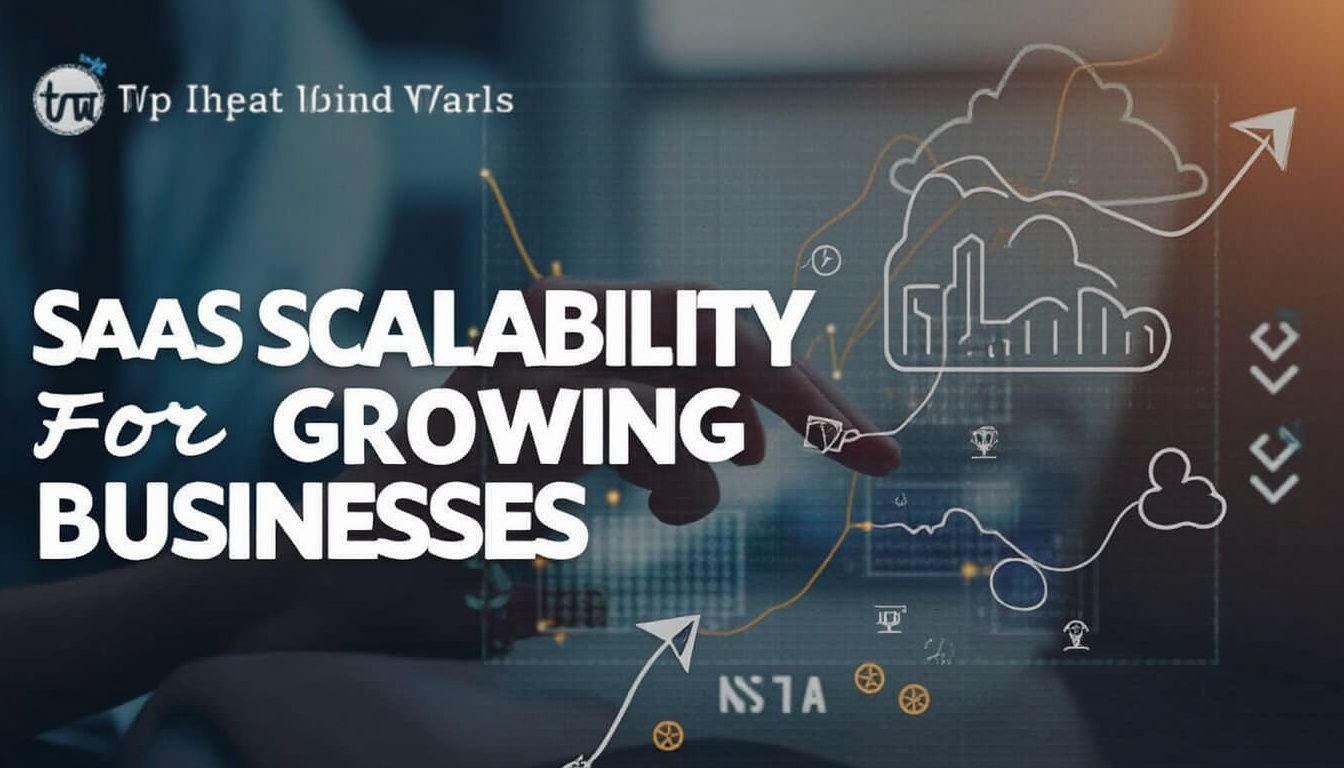In today’s digital-first business environment, Software as a Service (SaaS) has become the backbone of modern enterprise operations. But what happens when your SaaS business starts to grow rapidly? That’s where scalability becomes crucial. SaaS scalability refers to a system’s ability to handle increased workloads without compromising performance or requiring a complete overhaul of the existing infrastructure.
Understanding SaaS Fundamentals
SaaS is a software delivery model where applications are hosted centrally and delivered over the internet on a subscription basis. Unlike traditional software, SaaS solutions don’t require local installation and can be accessed from anywhere with an internet connection.
Key characteristics of SaaS include:
- Multi-tenant architecture
- Automatic updates and maintenance
- Subscription-based pricing
- Web-based access
- API integration capabilities
Core Components of SaaS Scalability
Technical Infrastructure
At the heart of SaaS scalability lies a robust technical infrastructure. This includes:
- Cloud computing resources
- Database management systems
- Application servers
- Network infrastructure
- Storage solutions
Business Processes
Scalable business processes are essential for maintaining efficiency as your organization grows. This involves:
- Standardized operations
- Documented procedures
- Automated workflows
- Clear communication channels
Technical Aspects of Scaling
Cloud Infrastructure
Modern SaaS applications rely heavily on cloud infrastructure for scalability. Cloud platforms like AWS, Azure, or Google Cloud provide:
- Elastic computing resources
- Auto-scaling capabilities
- Global availability
- Pay-as-you-go pricing models
Database Optimization
As your user base grows, database performance becomes critical. Key considerations include:
- Sharding strategies
- Caching mechanisms
- Query optimization
- Data partitioning
Application Architecture
A well-designed application architecture is fundamental for scalability:
- Microservices implementation
- Containerization
- Service mesh
- API management
Business Process Scalability
Operational Efficiency
Streamlining operations is crucial for scaling successfully:
- Process automation
- Resource allocation
- Team coordination
- Quality assurance
Team Structure
As your business grows, your team structure needs to evolve:
- Clear roles and responsibilities
- Specialized departments
- Training programs
- Career development paths
Customer Success at Scale
Onboarding Processes
Efficient customer onboarding becomes increasingly important:
- Automated welcome sequences
- Self-service resources
- Interactive tutorials
- Progress tracking
Support Systems
Scaling customer support requires:
- Tiered support levels
- Ticket management systems
- Knowledge base development
- Community forums
Financial Considerations
Cost Management
Managing costs effectively while scaling involves:
- Infrastructure optimization
- Resource utilization
- Vendor management
- Budget planning
Pricing Strategies
Develop pricing models that scale with your business:
- Tiered pricing
- Usage-based billing
- Enterprise agreements
- Custom solutions
Security and Compliance
Data Protection
As you scale, security becomes increasingly critical:
- Encryption protocols
- Access controls
- Regular audits
- Incident response plans
Regulatory Compliance
Maintain compliance across different markets:
- GDPR requirements
- Industry standards
- Local regulations
- Security certifications
Performance Monitoring
Key Metrics
Track essential performance indicators:
- Response times
- System availability
- Error rates
- Resource utilization
Monitoring Tools
Implement comprehensive monitoring solutions:
- Application performance monitoring
- Infrastructure monitoring
- User experience tracking
- Analytics platforms
Common Scaling Challenges
- Technical debt accumulation
- Resource constraints
- Customer satisfaction maintenance
- Market competition
- Team scaling issues
Best Practices for Scaling
- Start with a solid foundation
- Plan for future growth
- Implement automation early
- Focus on customer success
- Maintain security standards
- Monitor and optimize continuously
Tools and Technologies
Essential Tools for Scaling
- Infrastructure: AWS, Azure, GCP
- Monitoring: New Relic, Datadog
- Development: Docker, Kubernetes
- Automation: Zapier, GitHub Actions
Case Studies
Success Story: Company X
Achieved 300% growth in 18 months by:
- Implementing microservices architecture
- Automating customer onboarding
- Developing self-service support
- Optimizing resource utilization
Future Trends
- AI-driven optimization
- Edge computing integration
- Serverless architecture
- Enhanced automation capabilities
- Predictive analytics
Conclusion
Scaling a SaaS business requires careful attention to both technical and operational aspects. Success depends on maintaining a balance between growth and stability while ensuring customer satisfaction and security. By following the guidelines and best practices outlined in this article, businesses can build a strong foundation for sustainable growth.
Frequently Asked Questions
-
What is the most important factor in SaaS scalability? The most critical factor is building a flexible infrastructure that can handle growth while maintaining performance and reliability.
-
How do you maintain customer satisfaction while scaling? Focus on automated onboarding, self-service resources, and maintaining consistent support quality through proper tools and processes.
-
What are the common pitfalls in scaling a SaaS business? Common pitfalls include insufficient planning, technical debt accumulation, and neglecting customer experience during rapid growth.
-
When should a SaaS business start planning for scalability? Scalability should be considered from the beginning, but detailed planning should start when you’re approaching 70-80% of your current capacity.
-
How do you determine the right pricing model for a scaling SaaS business? Consider factors like customer segments, usage patterns, market positioning, and operational costs while ensuring the model can adapt to future growth.
